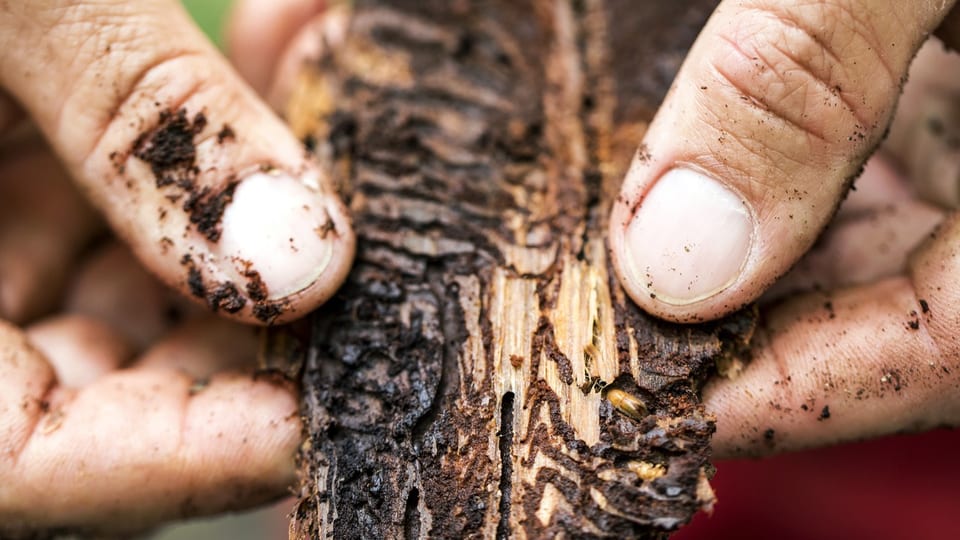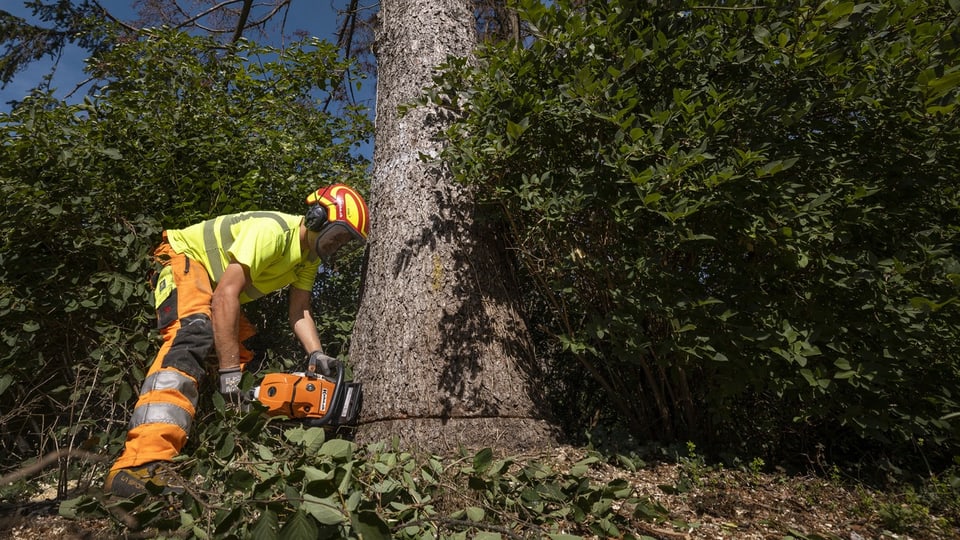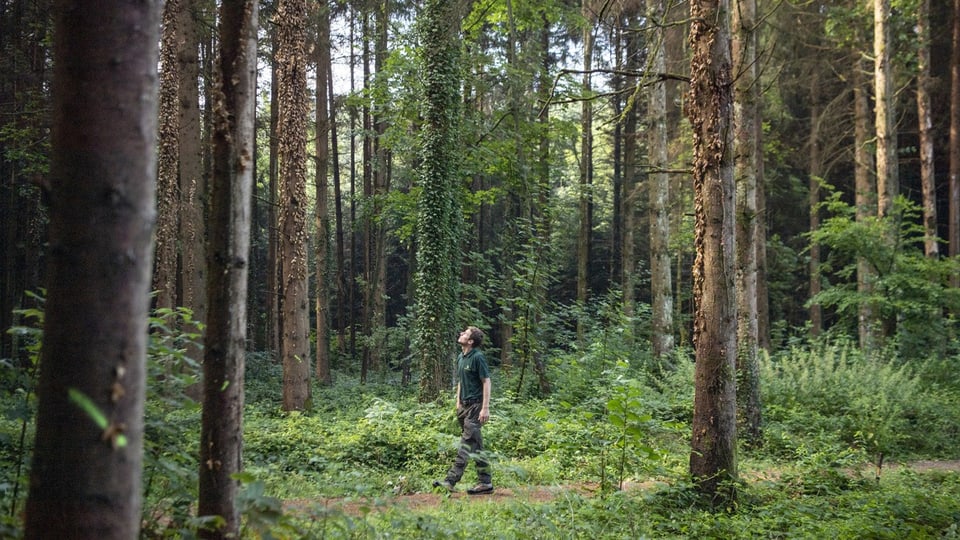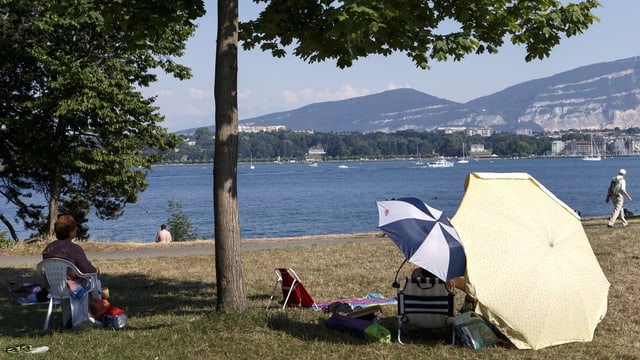- Bark beetles destroyed over 700,000 cubic meters of wood in Switzerland last year.
- This is shown by the estimate by the Swiss Federal Institute for Forest, Snow and Landscape Research (WSL).
- The reason for the high numbers is the dry weather. Experts also expect major damage from the bark beetle this year and a lot of work for forestry companies.
713,210 cubic meters of wood eaten by bark beetles. This is the balance sheet of the responsible Swiss forest protection department. According to WSL, around 14,000 wooden houses could be built with this amount of wood. This means that the bark beetle remains the largest pest in forestry.
The volume of eaten spruce wood increased by around 10 percent in 2023 compared to the previous year. However, it is far below the record values of 2019 (after Storm Lothar) or 2003, as the data shows.
Western Switzerland and the Central Plateau were particularly affected: in the canton of Vaud, so-called summer compulsory use rose by 85 percent, in the canton of Solothurn by 88 percent and in Neuchâtel by as much as 138 percent.

Legend:
The bark beetle lays its eggs in holes in the tree bark. The larvae then eat their fill before they hatch and fly out.
KEYSTONE/ALEXANDRA WEY
“You can see the consequences of the warm and dry years 2022 and 2023 here,” explains Simon Blaser, insect expert at WSL. “Spruce trees are less able to defend themselves when they are drought-stressed. At the same time, the beetles can develop more quickly. This is probably how the greater damage occurred.”
If the beetle is there, then there is pressure
In the canton of Neuchâtel alone, over 30,000 cubic meters of wood were removed from the forest in the summer because this is the only way to protect other trees from infestation. This means a lot of work for the forestry authorities. Because things have to happen quickly, as Simon Blaser emphasizes.

Legend:
Infected trees must be felled and removed from the forest within a few weeks so that the bark beetles cannot spread further. In the picture: A felling operation at Zurich’s Sihlfeld cemetery in 2023.
Keystone/Michael Buholzer
“Freshly infected spruce trees must be removed before the bark beetle can fly out.” This means that foresters have a maximum of two months.
9,500 beetle nests were reported to the WSL last year, 1,500 more than the year before. The months of February and March in particular were warmer than average. This meant that the beetles were able to swarm out early and a second or third generation could then emerge in the same year.
For WSL expert Simon Blaser it is clear: it could continue like this. “The beetles that have overwintered in the trees are currently flying out. Because winter and spring have been very mild, we are seeing that the beetles are already infesting new spruce trees.” The foresters are already on the move to identify infected trees.

Legend:
Forestry companies currently have to check their trees again for bark beetle infestation in order to be able to react in a timely manner.
KEYSTONE/Urs Flueeler (archive)
In the long term, other solutions will have to be found. In the Mittelland, spruces could be replaced by deciduous trees, says Simon Blaser. We also have to move away from monocultures. “This is the only way to prevent entire forests from being destroyed in the event of a pest infestation.” The pests are usually “specialized” on a certain type of tree.
The spruce originally comes from higher regions and is therefore particularly vulnerable to drought and heat. From Blaser’s point of view, the problem is that the bark beetle is slowly spreading to higher altitudes. In the mountains, spruce forests perform important protective functions, for example against avalanches or rockfalls. “If these forests are affected, then people are threatened and very expensive measures are needed, for example technical avalanche barriers.”

